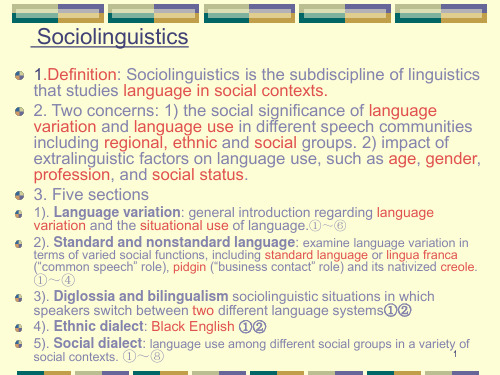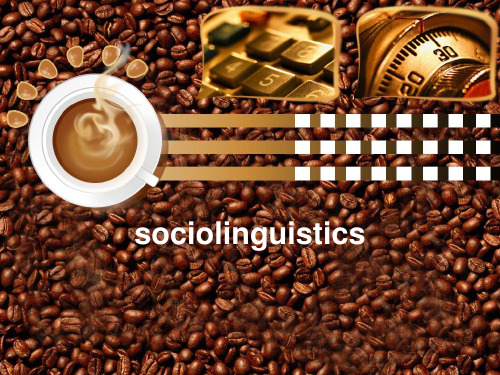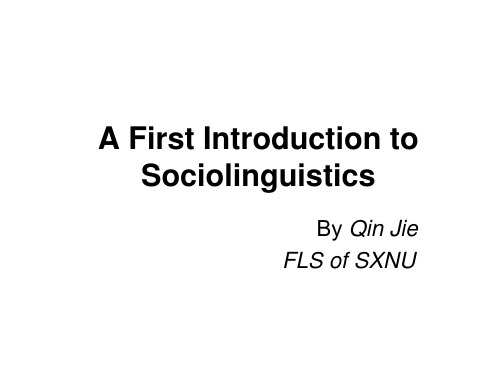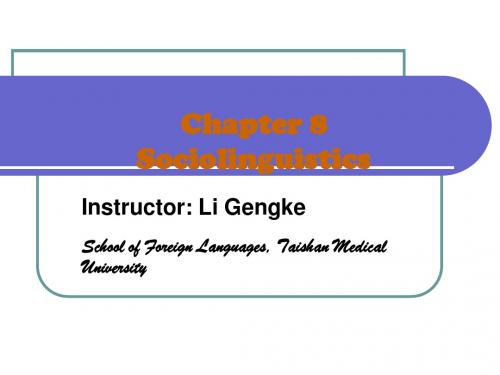Sociolinguistics.ppt
- 格式:ppt
- 大小:179.01 KB
- 文档页数:21


Chapter 8: SociolinguisticsLearning objectives●I. Sociolinguistics●II. Language variation●III. Language and gender●IV. Language and class●⏹Throughout the 20th century, a great deal of efforts has been taken to treat theinquiry of linguistics as a Monistic or Autonomous Pursuit of an independent science.⏹The resurrection of a Dualistic View of linguistic inquiry, came into being in the1960s, along with the development of sociolinguistics as an opposition to the dominant theory of Chomskyan linguistics.I. Sociolinguistics⏹Sociolinguistics is the sub-field of linguistics that studies the relation❑between language and society,❑between the uses of language and the social structures in which the language users liveTwo perspectives⏹Micro-studies:❑To look at society from the point of view of an individual member within it, or a worm’s-eye view of language in use.⏹Macro-studies:❑To look at society as a whole and consider how language functions in it and how it reflects the social differentiations, a bird’s eye view of the languageused in society.⏹Sociolinguistics is interested in how social factors influence the structure and use oflanguage.⏹Potential influencing social factors?❑class, gender, age, ethnic group, educational background, occupation, religion, etc.❑Comment on: You are what you say. (Lakoff 1991).⏹II. Language varieties⏹The key issue in sociolinguistics study is variation.❑ 1. Standard language❑ 2. Dialect❑ 3. Register❑ 4. Pidgin and Creole❑ 5. Lingua Franca❑ 6. Slang, jargon, and argot1. Standard language⏹George Bernard Shaw, Pygmalion⏹ A particular variety of a language is better than any other.⏹This dominant, or prestigious variety is often called standard variety orstandard language/dialect⏹Quote: A language is a dialect with an army and navy.⏹Question: what is the definition of the standard language in China?⏹普通话的定义:❑以北京语音为标准音, 以北方话为基础方言, 以典范的现代白话文著作为语法规范的现代汉民族共同语。



